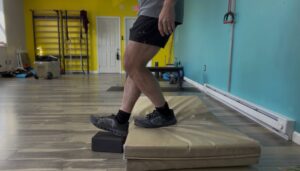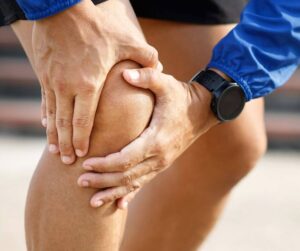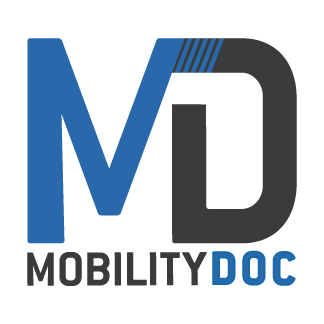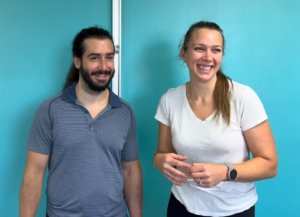Scar tissue isn’t all created equal. Some of it shows up on the surface of your skin while other times, it hides deeper inside the body. Both kinds can cause stiffness, pain, and limited movement. They form differently and respond best to different forms of treatment. In this blog, we’ll break down the key differences between external and internal scar tissue and why breaking them up matters. Join us as we tackle which techniques to break up scar tissue are most effective for each.
External Scar Tissue
These are the scars you can see and touch—post-surgical lines, cuts, even burns on the surface of your skin. They’re made of collagen fibers aligned (or misaligned) as your body patches up skin damage. These scars are usually localized, firm, and less flexible than healthy skin tissue.
Internal Scar Tissue
We’re going to focus on the most common one called adhesions. These form deeper beneath the surface between muscle fibers, fascia, connective tissue, or even around organs. When tissues heal they may cross-link structures that shouldn’t normally stick, limiting movement and causing stiffness or pain—even though you can’t see them.
Why Breaking Up Scar Tissue Matters (Surface vs Deep)

- Restore Mobility & Elasticity External scars can feel tight and restrict your skin’s glide. Internal adhesions restrict deeper structures, pulling on muscles or organs and reducing functional range of motion.
- Reduce Pain & Restriction Surface scarring may cause friction, elevated pain sensitivity, or numbness. Internal adhesions often trigger deeper pain, pulling or “sticking” when you move. (Learn more about sticky muscles here)
- Improve Circulation & Remodeling Scar tissue has poor blood flow. Techniques that break it up help realign fibers in both surface and deep tissue for smoother movement. Think about a ball of twisted up spaghetti vs. strands laid flat and orderly next to each other. The blood will definitely move easier through the orderly strands.
How Each Type Forms
External Scars
External scar tissue forms where skin is injured: incisions, burns, cuts. Without proper movement or early massage or stretching, it can become stiff, raised, or even stick.
Internal Adhesions
Internal scar tissue often forms after surgery, trauma, inflammation, or micro-tearing from workouts. As deeper tissues heal, collagen bands can bridge between adjacent structures that shouldn’t attach, forming sticky adhesions that reduce glide and flexibility.
Which Techniques Work Best for Each?
Here’s a table showing how the scar-mobilizing techniques from our last post map to external vs. internal tissue targets:
Technique | Best For… | How It Helps |
Scar Massage (gentle circular, parallel, perpendicular motions) | External scar tissue, skin-level stiffness | Softens scar, reduces sensitivity, improves local circulation, and helps fiber realignment |
Cross-Friction Massage (deeper, perpendicular strokes) | Deeper external and some internal adhesions | Breaks up and helps to realign fiber, and promotes mobility |
IASTM / Graston (Instrument-Assisted Soft Tissue Mobilization) | Both external and internal adhesions depending on depth | Tools help scrape deeper adhesions beneath the skin and into connective tissue |
Myofascial Release | Internal adhesions in fascia, muscle-deep restrictions | Sustained pressure releases fascia, improving glide and flexibility |
Active Release Technique (ART) | Internal adhesions tied to specific muscles/tendons | Combines specific movement with manual pressure to melt away internal scar tissue |
Muscle Flossing (compression band with movement) | Internal adhesions, especially between muscle layers | Compression + dynamic movement + blood restriction helps flush the area with clean blood to promote healing |
Watch Our How To Video Here
Pro Tips: Treating Both Layers, Safely
You should always verify with your doctor before trying these techniques. Depending on where you are in your healing journey some of these techniques might be more harmful than helpful!
- Start shallow, go deep carefully. Begin with gentle scar massage on the surface—if the tissue feels ready and healed, proceed with deeper cross-friction or tool-assisted work.
- Follow with stretch & strengthen. After breaking up tissue, solidify the gains by stretching, active range of motion, and strengthening to remodel tissue and learn new movement patterns.
- Respect healing timelines. Don’t massage or scrape until scars are fully healed and cleared by a professional—If you start doing internal massage too soon you may cause more harm than good.

Why Treating Both Layers Matters
External scars often look and feel puckered and stuck. Massage can soften them, reduce puckering or thickness, and improve sensitivity to the area. Just because we can’t see internal scar tissue doesn’t mean it’s not real. It can be a silent offender in terms of functional limitation. That sticky muscle feeling or joints feeling stuck really restricts you when you move.
Getting to both levels means deeper, better healing. If you only address the surface and skip the deeper tissue issues, those nagging stiffness or pain issues can persist—especially around joints or muscle groups. That’s why it’s important to use both myofascial release techniques and external scar tissue techniques to get back to 100%.
Joint Specific Resources
Want to apply some of those techniques to specific areas? Here are some How To’s and best practices for joint and muscle specific areas:

What Does Muscle Scraping Do?

Step Down Exercise — 4 Variations You Should Master

The Power of Curiosity in Personalized Physical Therapy

Flexibility, Stability, and Strength: The Secret Formula Behind Elite Throws

Pin and Stretch Technique: Dynamically Break Up Scar Tissue



